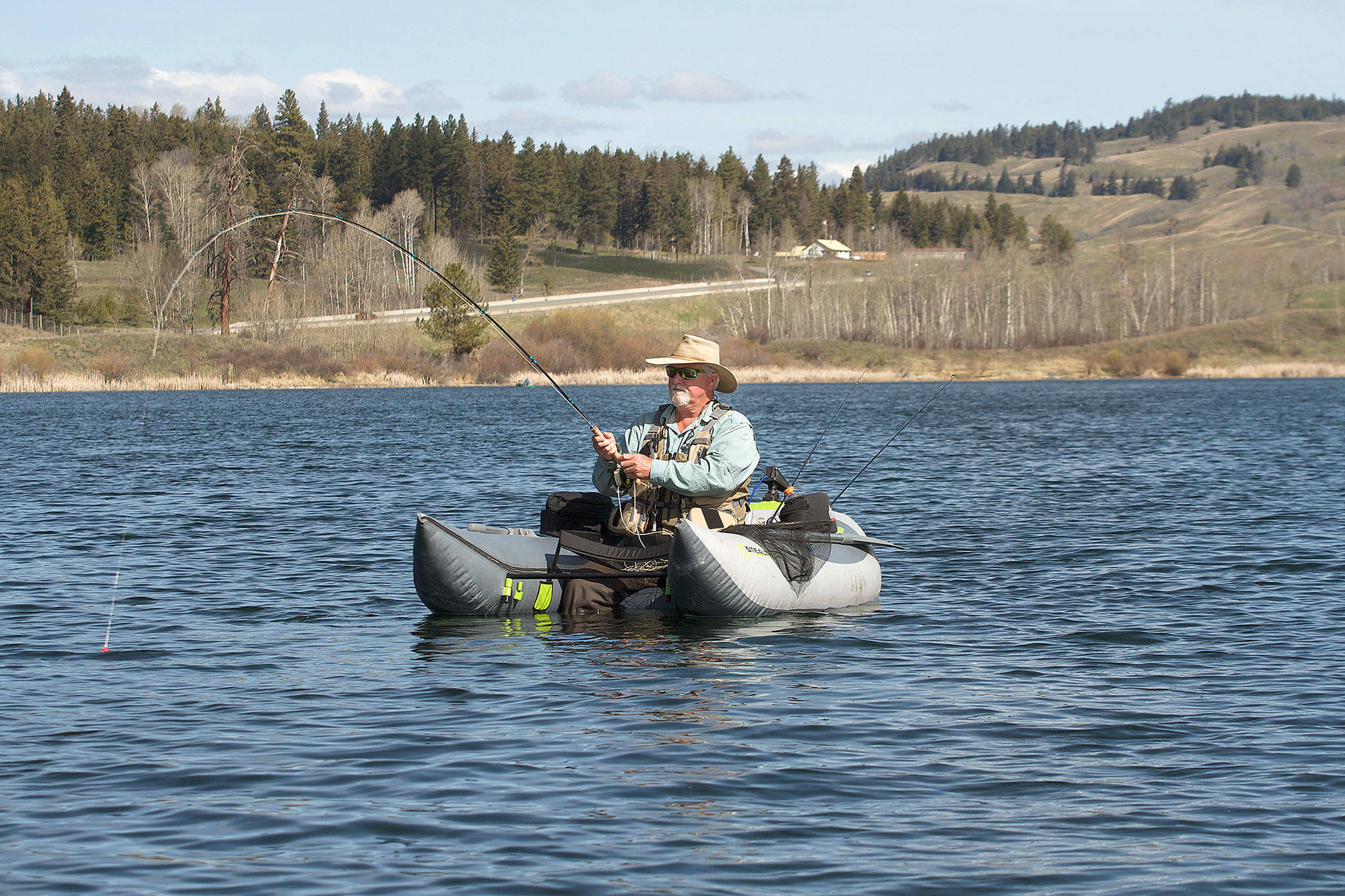By Mike Benbow
Special to The Herald
MERRITT, British Columbia — Retired fisheries biologist Curt Kraemer of Marysville was trying to figure out the fish at Corbett Lake during a trip in early May.
What were they eating? Where were they in the water column? Were they shallow or deep?
It was a little too early for the lake’s biggest insect hatches: either a bug called a Chironomid, also known as a midge, or a Callibaetis mayfly. Chironomids were hatching, but the bugs were small and their numbers were a bit sporadic.
So Kraemer anchored in about 31 feet of water, put a leech pattern a few feet behind an indicator on one rod and a midge pattern about 20 feet behind an indicator on another.
Where would the fish be? Which fly would they take?
Of course, fish grabbed both of the flies.
At the same time.
That usually creates a conundrum for me, so I never try to fish two rods. But Kraemer handled it with ease. After making sure both fish were well hooked, he set one rod down and landed and released the fish on the other rod. Then he released the second fish.
Kraemer’s experience was sort of the story of our trip at Corbett. We caught fish on just about everything just about everywhere if we worked hard enough and were willing to spend enough time.
“The thing that I enjoyed the most was that on the three days of our trip, I caught fish on 16 different flies,” Kraemer said.
Just about everything worked to a degree. Nothing was really hot.
Kraemer, Dick Snow, also of Marysville, Ron Downing of Granite Falls, and I had gone to check out the pay lake, which has a nice lodge and dining facilities, and rental cabins with kitchens and boats.
We wanted to see if the well-known fly-fishing lodge, now under new ownership, would still be a good place for an outing of our fly-fishing club.
Corbett is about 71 acres with a number of deep spots to help the fish survive the winter freeze. But more importantly, it’s filled with a number of shallow, weedy shoals that produce a lot of bugs for the fish to eat.
In addition to midge and mayfly hatches in the spring, the lake also has plentiful stocks of scuds (freshwater shrimp) and leeches that are available for the fish to eat year-round. In the fall, hopper patterns fished along the shoreline can be very effective.
The lake is located about 15 minutes from the community of Merritt, which has all the needed services and facilities, and a warm, sunny climate.
Corbett is a 71-acre lake nestled at about 3,500 feet of elevation around two of the largest cattle ranches in Western Canada.
Snow said he had a lot of fun there, but that most of his fish were about the same size — 3 to 4 pounds. “I would like to see a few bigger ones,” he said.
About 3,600 Kamloops rainbow trout of at least 2 pounds had been planted in the lake last year, and that’s mostly the fish that we caught.
At the time we were there, Phillip Rowley, a Canadian lake fishing specialist and author, was giving seminars to a group of anglers. He said the mayflies were getting ready to hatch, but hadn’t started yet. Most of his group was catching fish on Chironomid patterns fished in some of the shallow areas and along the drop-offs.
Downing caught fish on Chironomids, too, but also did well with a balanced leech patterns. “I liked that place,” he said, noting it’s an easy drive and a comfortable setting.
Talk to us
> Give us your news tips.
> Send us a letter to the editor.
> More Herald contact information.

























